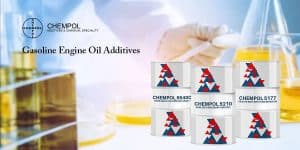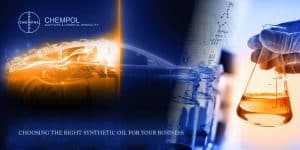Lubricant Additives Manufacturers Adhering to Performance and a Sustainable Future
Lubricant additives may be small in proportion within a formulation, but their impact is immense. These specialized chemicals are essential for giving lubricants the properties they need to protect machinery, improve efficiency, and meet the ever-evolving demands of modern equipment.
But in a world focused on sustainability, the spotlight is shifting toward additives that don’t just enhance performance but actively contribute to a greener future.
Sustainable Additives From Start to End:
It’s not just about how a lubricant works for the customer; sustainability demands we look at the entire journey of those crucial additives. The “cradle-to-cradle” theory helps us work towards carbon neutrality. Here are the key questions to ask:
Where Do We Begin? From Responsible Sourcing!
Where do the raw materials for an additive come from? How are they obtained, and what is the environmental cost of that process?
Green Manufacturing
The production of additive components, including both its manufacture and its design, has an effect on the product. What is the energy efficiency of the processes? Do they generate a small amount of waste?
What are the benefits of doing so? The impact on performance!!
Ingredients are really potent! Are the lubricant’s lifespan and performance improved as a result of this? A customer’s environmental footprint will be reduced in proportion to the number of times they need to replace their oil for the vehicle.
In The Spotlight: Additives In The Context Of The Circular Economy
A circular economy seeks to maximize the exploitation of resources while minimizing the amount of waste that is produced. When it comes to the functionality of this kind of vehicle, lubricant additives are absolutely necessary. By extending the lifespan of lubricants, enhancing the performance of equipment, and maybe making it feasible to re-refine used oil, additives provide a direct contribution to the advancement of circularity.
Additives that are not only efficient but also kind to the environment are the best choices.

The selection of suitable components is absolutely necessary to produce lubricants that are cognizant of their impact on the environment. Take into consideration the following, if you please:
Using the Source of Nature: Additives Derived from Biomaterials
Leave the realm of petroleum! When it comes to the environment, additives that are obtained from renewable sources, give a specific benefit. From the very beginning of the process, they immediately begin to lessen the carbon footprint that your lubricant leaves behind.
Various Components That Serve Multiple Purposes: Experts in the Field of Efficiency
Since only chemicals can accomplish the same task, why do companies in the UAE utilize so many of them? The use of multifunctional additives not only helps to preserve the material from oxidation and wear, but they also contribute to the general enhancement of the material. In addition to simplifying your recipe, this will potentially minimize the overall amount of resources that are consumed.
The totality of the cycle is comprised of re-refining and the capacity to be recycled.
We require lubricants that are consistent with a circular economy in order to meet our criteria. Because of this, it is necessary to do research into the ways in which additives affect the capability of re-refining used oil. When it comes to this process, compatibility is very necessary in order to reduce waste and make the most of the use of essential resources.
Additional Considerations
The use of additives for sustainability is an ongoing process. Here are other factors manufacturers should explore:
- Stricter sourcing standards: Prioritize suppliers committed to responsible, verifiable practices.
- Staying updated on cutting-edge solutions can lead to even greater sustainability gains with new additive technologies.
The Crucial Role of Innovation

It is in the laboratory where the future lies. Innovation is key to creating the additives of the future.
This presents an extraordinary opportunity for the lubricant companies business in UAE, which is to develop additives that not only improve performance but also save the environment. The following is an example of how research and development may make a significant difference:
Additives are Customized for electric vehicles.
It is not enough to simply have a new engine for electric cars; they require specific fluids for everything from the motors to the battery cooling. Specially formulated additives will be vital to protect these systems and enhance their effectiveness.
Efforts Made to Advance Efficiency
Is it possible to minimize friction even further? Is it possible that additives may make machinery work more smoothly and waste less energy? Ideation is where the solutions can be found.
In the interest of environmental preservation, biodegradability
There is a finite lifespan for lubricants. The use of additives that can be properly decomposed at the end of a specialty lubricant’s lifespan is essential for reducing the amount of long-term damage to the environment.
The Big Picture

Be Sure Not to Ignore the Big Picture
Although additives for lubricants can appear to be a little matter, they actually have a significant amount of promise in terms of conservation of resources. Those businesses that take the initiative and think about these components will not only do the right thing, but they will also put themselves in a position to be successful.
Additive Gives You an Advantage in the Market
Customers are not simply shopping for any lubricant; rather, they are looking for products that are effective and align with their core beliefs. We can meet this increased need by developing environmentally friendly lubricants with the appropriate ingredients.
That Is What the Customers Desire
Environmentalism is a concern for many people. The things that they use should make them feel good about themselves and safeguard the equipment that they utilize. To achieve success, it is essential to deliver on both performance and sustainability.
Innovation is the winner and, therefore, leads the way.
If your chemical suppliers in UAE can demonstrate environmental responsibility by using innovative additives that are sustainable for the environment, they will position themselves as a genuine innovator. This kind of forward-thinking builds trust and attracts future-focused consumers.
Engage with the Possibilities
Most successful businesses will give careful thought to each and every component that is used in the production of the lubricants that they use. Those individuals who are able to produce exceptional and responsible products by making full use of the possibilities offered by additives are the ones who will be successful in the future.






































